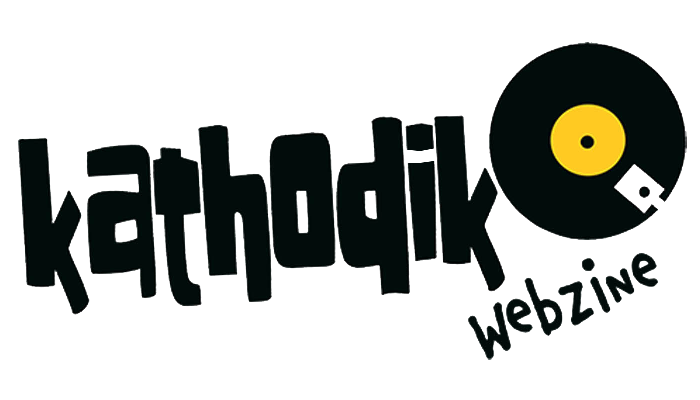
The Eleventh episode dedicated to the discovery of Research Centers, Museums and Recording Studios where electronic music in all its forms is studied and practiced. First: Museo del Synt Marchigiano – Italy (here). Second: SMEM Swiss Museum for Electronic Music Instruments – Swiss (here). Third: MESS Melbourne Electronic Sound Studio – Austrialia (here). Fouth: Nakatsugawa Korg Museum – Japan (here). Fifth: Museo della Farfisa – Italy (here). Sixth: VSM Vintage Synthesizer Museum – USA (here). Seventh: CIM: Colloquio di Informatica Musicale XXIII – Italy (here). Eighth: SoundMit – International Synth Event – Italy (here). Nine: EMEAPP – Electronic Music Education and Preservation Project – USA (here). Ten: EMS Elektronmusik Studion – Sverige (here). Today is the turn of Germán Toro Pérez, Head of the Institute for Computer Music and Sound Technology (ICST), located in Zurich, Swiss. I invite you to read the interview:
How did the ICST come about?
The ICST developed from the former Swiss Center for Computer Music that had been founded by Bruno Spörri, Gerald Bennett and other musicians in the middle of the 1980s. The center was integrated in the former School for Music and Drama Zurich, a school that became part of what is today the Zurich University of the Arts (ZHdK). The ICST was founded in 2005 at ZHdK by Gerald Bennett and Daniel Fueter, the former director of the school, at a time when research was put in the agenda of art schools in Switzerland.

How is it structured?
The ICST is one of two research centers of the ZHdK Music Department and is closely intertwined with it. The ICST itself is a non-hierarchical structure composed of 13 research fellows with different profiles, one administrator and a changing number of associates working temporarily in research projects.
What equipment does the it have?
The ICST has 2 Studios, 2 research spaces, a fab lab and offices, and shares other facilities such as concert halls, studios and other special rooms at the ZHdK’s Campus “Toni Areal”.

What can you do at the ICST?
The main activities of the ICST are research, education and artistic creation. Researchers and teachers of the ZHdK, as well as external researchers and artists can become involved in these activities. We are also involved in bachelor, master and PhD programs of the music department.

Is it possible to do research at the ICST?
Research is the ICST’s main activity. Moreover, through open programs for artists in residency and pre-doctoral studies we ask artists and researchers of the global community to propose projects.

Is the Institute on social media?
Yes, indeed. You can find the ICST on Instagram at @zhdk_icst and on Facebook. Furthermore, we are expanding our YouTube channel (ZHDK_ICST).
Does the ICST care for the issue of gender in Electronic Music? And in Swiss Musical Culture?
We actively promote diversity and inclusion in all our activities. Given that the research staff is still disbalanced in terms of gender, we work to make all other programs and activities as inclusive as possible.

What is your relationship with the Swiss government?
Our university belongs to the Canton Zurich and gets its funding from the state.

Is the ICST open to collaborations with institutions, associations, research centers?
The ICST is since its foundation internationally active and well connected with similar centers worldwide. We regularly take part in conferences, festivals, and venues in Switzerland and abroad. The ICST supports the local contemporary music and performance scene in Zurich and in Switzerland through collaborations with local festivals –big and small– and facilitating the realization of experimental venues and initiatives in the city.

I got to know the Institute for Computer Music and Sound Technology (ICST) through ‘Les Espaces Électroacoustiques’ trilogy, rewiewed by Kathodik. How the idea of trilogy was born?
the Idea of the trilogy took shape as the research on the performance practice of electroacoustic music developed at ICST since 2012. This happened along three research projects. The first one was dovoted to pieces created at the former “Studio di Fonologia“ of the Rai in Milano and was realized in collaboration with Maddalena Novati, the former director of the “Archivio di Fonologia” that remained at the RAI after the studio was closed, several musicologists and other Italian institutions such as Tempo Reale, Archivio Luigi Nono and Centro Studi Luciano Berio. The second project was devoted to pieces belonging to the collections of the Paul Sacher Foundation in Basle. The third, and last one was dedicated to live electronic music and was focused on pieces created since digital technologies became fundamental in composition and performance practice in the 1980’s until our days. The trilogy reflects very much this development. Nevertheless, the intention from the very beginning was to make multichannel pieces, and pieces with singular spatial settings available to a broader audience in surround format.
Ongoing projects and future projects?
Our actual research fields are 3D-Audio, Interfaces & Instrument Design, Audio Haptic, Auditory Perception, Telematic Performance, Performance Practice of Electroacoustic Music, Sound Design, Sound Moving Sources, Theory, Notation and Representation, Acoustic Ecology and Generative Art. A new research project aims for developing a sustained pedagogy of electronic music creation for children at music schools and conservatories.
Link: The Institute for Computer Music and Sound Technology Home Page
Link: The Institute for Computer Music and Sound Technology Facebook Page
Link: The Institute for Computer Music and Sound Technology Instagram Profile
Link: The Institute for Computer Music and Sound Technology Youtube Channell



